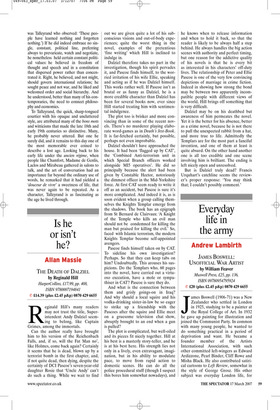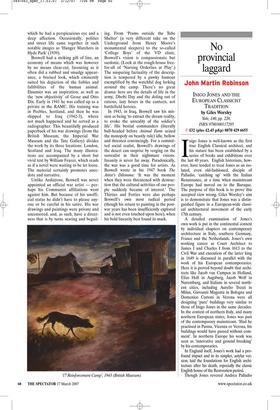Everyday life in the army
Andrew Lambirth
JAMES BOSWELL: UNOFFICIAL WAR ARTIST by William Feaver Muswell Press, £25, pp. 136, ISBN 09780954795924 ✆ £20 (plus £2.45 p&p) 0870 429 6655 James Boswell (1906-71) was a New Zealander who settled in London in 1925, studying to be a painter at the Royal College of Art. In 1932 he gave up painting for illustration and joined the Communist Party. In common with many young people, he wanted to do something practical in a period of deprivation and want. He became a founder member of the Artists International Association, with such other committed left-wingers as Edward Ardizzone, Pearl Binder, Cliff Rowe and Misha Black. He also contributed satirical cartoons to Left Review, somewhat in the style of George Grosz. His other subject was everyday London life, for which he had a perspicacious eye and a deep affection. Occasionally, politics and street life came together in such notable images as ‘Hunger Marchers in Hyde Park’ (1939).
Boswell had a striking gift of line, an economy of means which was however by no means clear-cut, favouring as it often did a rubbed and smudgy appearance, a bruised look, which eminently suited his depiction of the foibles and fallibilities of the human animal. Daumier was an inspiration, as well as the ‘new objectivity’ of Grosz and Otto Dix. Early in 1941 he was called up as a private in the RAMC. His training was in Peebles, Scotland, and then he was shipped to Iraq (1942-3), where not much happened and he served as a radiographer. This beautifully produced paperback of his war drawings (from the British Museum, the Imperial War Museum and the Tate Gallery) divides the work by its three locations: London, Scotland and Iraq. The many illustrations are accompanied by a short but vivid text by William Feaver, which reads as if a novel were waiting to be let loose. The material certainly promotes anecdote and narrative.
Unlike Ardizzone, Boswell was never appointed an official war artist — perhaps his Communist affiliations went against him. But because of his unofficial status he didn’t have to please anyone or be careful in his satire. His war drawings and paintings were private and uncensored, and, as such, have a directness that is by turns searing and beguil ing. From ‘Prams outside the Tube Shelter’ (a very different take on the Underground from Henry Moore’s monumental sleepers) to the so-called ‘College Boys’ of the VD clinic, Boswell’s vision is compassionate but sardonic. (Look at the rough-house freefor-all of ‘Nursing Orderlies at Play’.) The unsparing factuality of the description is tempered by a pawky humour exemplified by the watchful dog lurking around the camp. There’s no great drama: here are the details of life in the army, Dhobi Day and the doling out of rations, lazy hours in the canteen, not battlefield heroics.
In 1943, in Iraq, Boswell saw his mission as being ‘to extract the dream reality, to evoke the unreality of the soldier’s life’. His bestial commanders (literally bull-headed before Animal Farm seized the monopoly on beastly rule) idle, bellow and threaten convincingly. For a committed social realist, Boswell’s drawings of the desert can surprise by verging on the surrealist in their nightmare visions. Insanity is never far away. Paradoxically, the war was a good time for artists. As Boswell wrote in his 1947 book The Artist’s Dilemma: ‘It was the moment when they were threatened with destruction that the cultural activities of our people suddenly became of interest.’ The Thirties and Forties were also perhaps Boswell’s own most radical period (though his return to painting in the postwar years has been insufficiently explored and is not even touched upon here), when his bold linearity best found its mark.



































































































 Previous page
Previous page